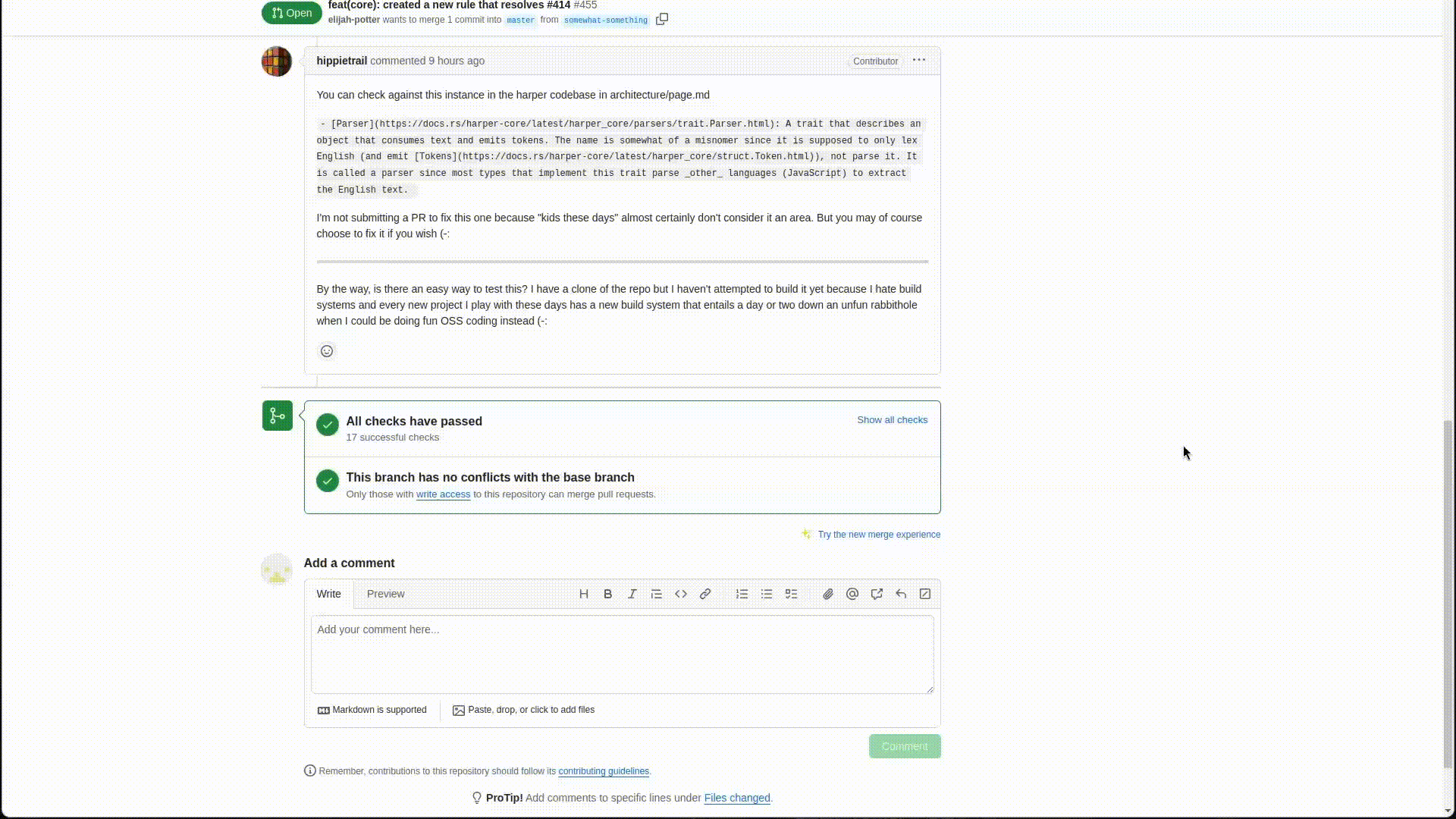Reviewing Pull Requests
There are a lot of individual components and artifacts that make up Harper. How a patch gets reviewed depends significantly on which component or artifact it affects. This page seeks to document the tooling available for downloading and testing patches on a local machine.
Patches to harper-core
If a patch only affects a grammar rule, it should only be touching harper-core.
This means you can test the change using any Harper frontend (of which there are many).
Using GitHub Actions Artifacts
We run builds for a variety of platforms whenever a Pull Request is pushed to.
You can use these to review changes to various aspects of Harper, including harper-ls, harper-cli, and the Visual Studio Code plugin.

Testing Using Cargo and harper-cli
Most of our build tooling exists for Harper's various integrations.
If you are testing harper-core, you can skip all the fluff and compile the patch using Cargo directly.
cargo install --git https://github.com/automattic/harper --branch <branch-name> <binary-artifact> --lockedFor example, for PR #445 , we can install the patched version of the harper-cli debug tool with the following command:
cargo install --git https://github.com/automattic/harper --branch somewhat-something harper-cli --lockedFrom there, you can run the tool on any file with harper-cli lint <path>.
Testing Via the Docker Image
We build our web documentation in a Docker image. This documentation includes a demo , so you can also use this image to review changes to linting rules and other aspects of the core algorithm.
git clone https://github.com/automattic/harper
cd harper
git switch <branch from PR>
IMAGE_HASH=$(docker build . -q)
docker run -p 3000:3000 -it $IMAGE_HASHFrom there, open up http://localhost:3000 in your web browser of choice and use the text area to test the change.